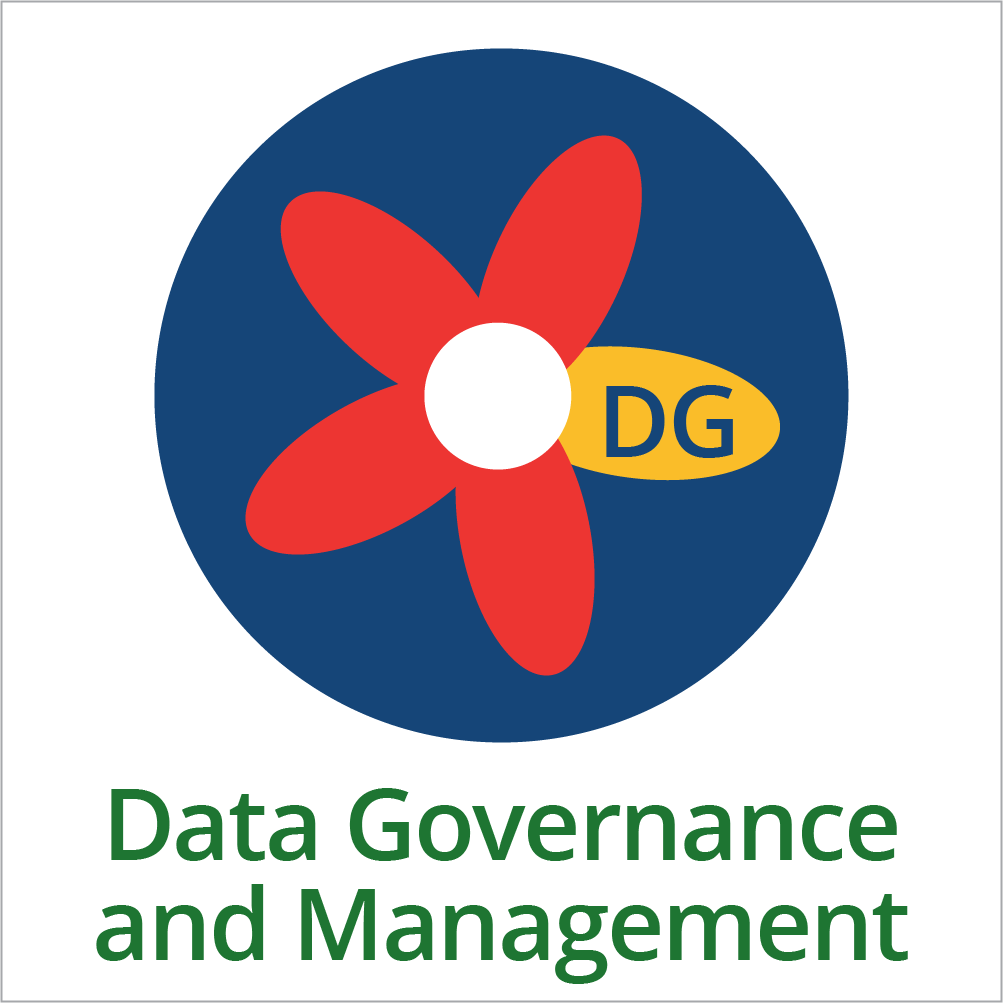- Overview
- Introduction
- Purpose and Vision
- Data Governance and Management
- System Design and Development
- Data Analysis and Use
- Sustainability
- Self-Assessment
- Resources
- Framework 2022
- Framework 2014

Data governance is both an organizational process and a structure. Data governance establishes responsibility for data, organizing program staff to collaboratively and continuously improve data quality through the creation and enforcement of policies, roles, responsibilities, and procedures. Management is the development, implementation, and enforcement of policies and procedures (standardization of business processes) to operationalize all aspects of the data system. Management addresses the implementation of data governance policies (via procedures) and oversees the use and operation of the data system.
Data governance exists whether formal or informal. Informal data governance is associated with significant risks. These risks may include:
- questionable data quality, security, and usefulness
- difficulty in maintaining consistent and reliable data and processes;
- unclear roles and responsibilities of internal and external staff relative to the data; and
- inappropriate data sharing with internal and external staff and across external agencies.
Formal data governance exists in written form. The benefits of formal data governance include:
- increased likelihood that data are of high quality and protected;
- increased use of data in ways consistent with the purpose and vision of the data system;
- increased confidence in data and associated processes (e.g., oversight of analysis activities); and
- improved management, including fiscal efficiency and overall system accountability.
Data governance structures and policies are dynamic ; they must evolve as the programs and policies that drive the data system evolves. They must also be consistent with applicable federal and state regulations and policies. Managing the state data system requires responding to the evolving structures and policies and implementing the associated procedures. Part C and Part B 619 state staff or other designated state staff should be actively engaged in the governance of their data system. (In some states, there may be more than one data governance structure overseeing data that impact Part C/619.)
This subcomponent consists of three sections. The first section, Authority and Accountability, is about establishing the data governance and management structure(s), responsibility, and oversight. The second section, Data Quality and Integrity, addresses policies to ensure data quality (timeliness, completeness, accuracy and reliability) and integrity (maintaining data quality and consistency for data’s intended use throughout their lifecycle). The section also focuses on the implementation of the procedures to ensure consistent application of data quality and integrity policies. The third section, Security and Access, focuses on ensuring appropriate access and the protection of state data from loss, misuse, and contamination.
Section 1: Authority and Accountability
Quality Indicator DG1
The state’s data governance delineates appropriate roles and responsibility for decision-making authority, accountability, and management consistent with the uses of the Part C/619 data system.
Quality Indicator DG2
Part C/619 staff and other state staff develop and implement data governance policies and procedures to effectively manage the data system.
Section 2: Data Quality and Integrity
Quality Indicator DG3
Data governance policies and procedures address the quality and integrity of the data.
Quality Indicator DG4
Part C/619 or other state staff oversee and manage the consistent application of data quality and integrity policies and procedures.
Section 3: Security and Access
Quality Indicator DG5
Data governance policies and procedures address the security of and access to Part C/619 data.
Quality Indicator DG6
Part C/619 or other state staff oversee and manage the consistent application of data security and access policies and procedures.
Resources Related to Data Governance and Management
 Data Governance ToolkitThis DaSy toolkit contains information, guidance, and templates to assist Part C and Part B 619 program staff with creating or enhancing their data governance ...Read more
Data Governance ToolkitThis DaSy toolkit contains information, guidance, and templates to assist Part C and Part B 619 program staff with creating or enhancing their data governance ...Read more Data Governance ChecklistThis checklist is designed to assist stakeholder organizations with establishing and maintaining a successful data governance program by summarizing the key data privacy and security ...Read more
Data Governance ChecklistThis checklist is designed to assist stakeholder organizations with establishing and maintaining a successful data governance program by summarizing the key data privacy and security ...Read more P-20W Data Governance: Tips from the StatesBest practices and lessons learned from SLDS grantee states on establishing data governance for data systems spanning early childhood to labor.Read more
P-20W Data Governance: Tips from the StatesBest practices and lessons learned from SLDS grantee states on establishing data governance for data systems spanning early childhood to labor.Read more A Framework for Choosing a State-Level Early Childhood Governance SystemA number of states have made ambitious governance changes that involve creating new agencies focused on early childhood programs and services for children from birth ...Read more
A Framework for Choosing a State-Level Early Childhood Governance SystemA number of states have made ambitious governance changes that involve creating new agencies focused on early childhood programs and services for children from birth ...Read more Avoid the Pitfalls: Benefits of Formal Part C Data System GovernanceThis brief promotes formal data governance for Part C data by describing lessons learned from other industries; outlining the risks of informal data governance and ...Read more
Avoid the Pitfalls: Benefits of Formal Part C Data System GovernanceThis brief promotes formal data governance for Part C data by describing lessons learned from other industries; outlining the risks of informal data governance and ...Read more Traveling Through Time: The Forum Guide to Longitudinal Data Systems (Book III)This electronic book is the third in a four-part series about longitudinal data systems. It provides guidance on organizational issues, how to keep the project ...Read more
Traveling Through Time: The Forum Guide to Longitudinal Data Systems (Book III)This electronic book is the third in a four-part series about longitudinal data systems. It provides guidance on organizational issues, how to keep the project ...Read more
Published March 2022.

